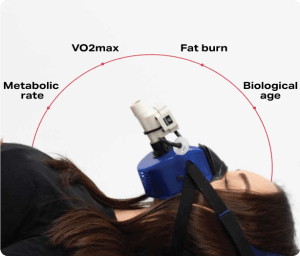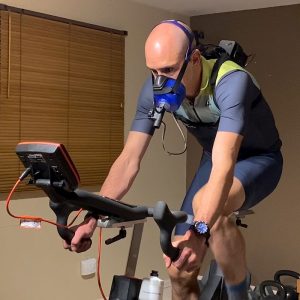 What is the best way to train as you age to improve longevity?
What is the best way to train as you age to improve longevity?
Peter Attia tells us in OUTLIVE and on podcasts to train in “ZONE 2” and do VO2 Max Workouts (1-4 minutes all out)… is that what ALL of us need to be doing?
I will add…
- Test and not guess.
- Personalization is key.
- Women are different than men.
What is LACTATE?
Lactate, also known as lactic acid, is a byproduct of anaerobic metabolism, particularly when glucose is broken down for energy in the absence of sufficient oxygen.
During intense exercise, the body may produce lactate as a temporary energy source when oxygen demand exceeds supply, such as during high-intensity activities like sprinting or heavy weightlifting.
https://www.trainingpeaks.com/blog/the-importance-of-lactate-threshold/
https://www.endureiq.com/blog/understanding-and-practically-determining-the-first-aerobic-threshold-of-endurance-training
How and why should you measure it?
Lactate production increases with exercise intensity, and it accumulates in the bloodstream when its production outpaces clearance.
This accumulation is associated with muscle fatigue and a decrease in exercise performance.
However, lactate itself isn’t solely responsible for fatigue; it’s just one factor among many in the complex process.
Lactate threshold testing is a method used to determine an individual’s exercise intensity at which lactate accumulation starts to increase significantly. This is typically done through incremental exercise tests where blood samples are taken at various stages of increasing intensity to measure lactate concentration.
The point at which there’s a notable increase in lactate accumulation is identified as the lactate threshold.
What does a breath analysis test as PNOE measure as compared to Lactate Threshold test?
Metabolism breath analysis, such as PNOE, involves measuring respiratory gases (oxygen and carbon dioxide) to assess metabolism and energy utilization during exercise. While lactate threshold testing focuses on identifying the intensity at which lactate accumulation begins to rise, metabolism breath analysis provides insights into energy systems being utilized (aerobic vs. anaerobic), substrate utilization (carbohydrates vs. fats), and overall metabolic efficiency during exercise.
PNOE metabolism testing and lactate threshold testing are two different methods used to gather physiological data for optimizing training programs, and they provide distinct insights into an individual’s metabolism and exercise performance.
- PNOE Metabolism Test: PNOE utilizes breath analysis to measure respiratory gases (oxygen and carbon dioxide) during exercise. This analysis allows for the determination of key metabolic parameters such as oxygen consumption (VO2), carbon dioxide production (VCO2), and respiratory exchange ratio (RER). From these measurements, PNOE can estimate energy expenditure, substrate utilization (fat vs. carbohydrate oxidation), and metabolic efficiency during exercise. This information helps to understand how the body is utilizing fuel sources and can guide nutrition and training strategies to optimize performance and achieve specific goals.
- Lactate Threshold Testing: Lactate threshold testing involves measuring blood lactate concentrations during incremental exercise to identify the exercise intensity at which lactate begins to accumulate significantly in the bloodstream. This threshold is an essential marker for determining optimal training zones and intensity levels. Training near or slightly above the lactate threshold can improve endurance and performance by enhancing the body’s ability to clear lactate and tolerate higher intensities of exercise.
The data from both PNOE metabolism testing and lactate threshold testing provide valuable information to help determine a personalized training program:
- PNOE Metabolism Test Data: This data helps to understand an individual’s metabolic profile, including their aerobic capacity, substrate utilization patterns, and metabolic efficiency. It can guide nutrition strategies, such as determining optimal fueling strategies for training and competition, and help tailor training programs to maximize fat oxidation, improve metabolic flexibility, and optimize energy production during exercise.
- Lactate Threshold Testing Data: This data identifies the specific exercise intensity associated with lactate accumulation, which is crucial for establishing individualized training zones. By training at or slightly above the lactate threshold, athletes can target the physiological systems responsible for endurance performance and improve their ability to sustain higher workloads without fatiguing. Lactate threshold testing data informs the prescription of intensity-specific training programs tailored to an individual’s fitness level, goals, and performance needs.
In combination, the data from both PNOE metabolism testing and lactate threshold testing offer comprehensive insights into an individual’s metabolic and physiological responses to exercise. By integrating these insights into a personalized training program, athletes and fitness enthusiasts can optimize their performance, improve their endurance capacity, and achieve their goals more effectively.





